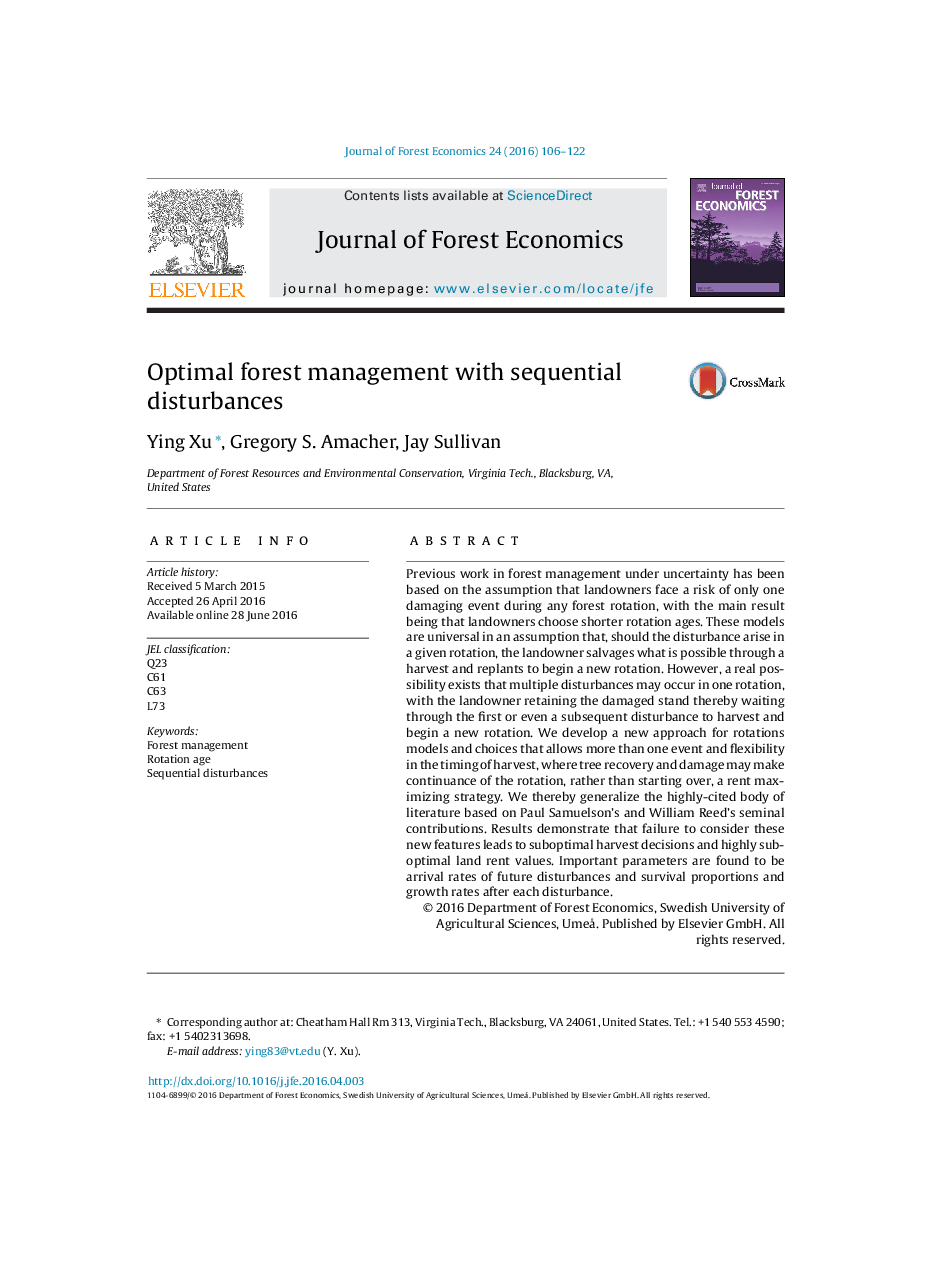| Article ID | Journal | Published Year | Pages | File Type |
|---|---|---|---|---|
| 6545172 | Journal of Forest Economics | 2016 | 17 Pages |
Abstract
Previous work in forest management under uncertainty has been based on the assumption that landowners face a risk of only one damaging event during any forest rotation, with the main result being that landowners choose shorter rotation ages. These models are universal in an assumption that, should the disturbance arise in a given rotation, the landowner salvages what is possible through a harvest and replants to begin a new rotation. However, a real possibility exists that multiple disturbances may occur in one rotation, with the landowner retaining the damaged stand thereby waiting through the first or even a subsequent disturbance to harvest and begin a new rotation. We develop a new approach for rotations models and choices that allows more than one event and flexibility in the timing of harvest, where tree recovery and damage may make continuance of the rotation, rather than starting over, a rent maximizing strategy. We thereby generalize the highly-cited body of literature based on Paul Samuelson's and William Reed's seminal contributions. Results demonstrate that failure to consider these new features leads to suboptimal harvest decisions and highly suboptimal land rent values. Important parameters are found to be arrival rates of future disturbances and survival proportions and growth rates after each disturbance.
Related Topics
Life Sciences
Agricultural and Biological Sciences
Agronomy and Crop Science
Authors
Ying Xu, Gregory S. Amacher, Jay Sullivan,
